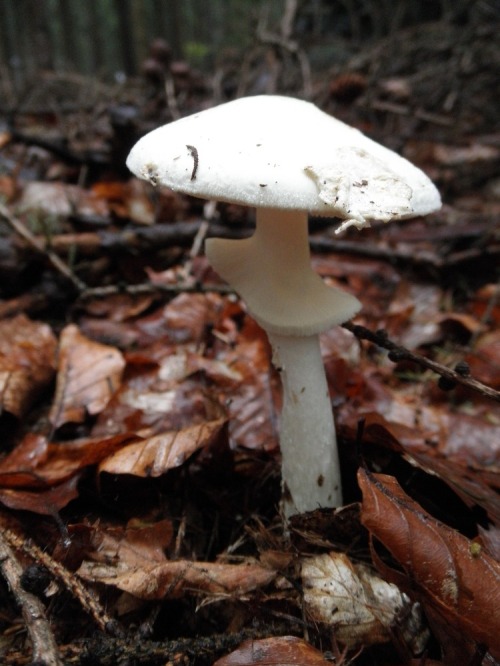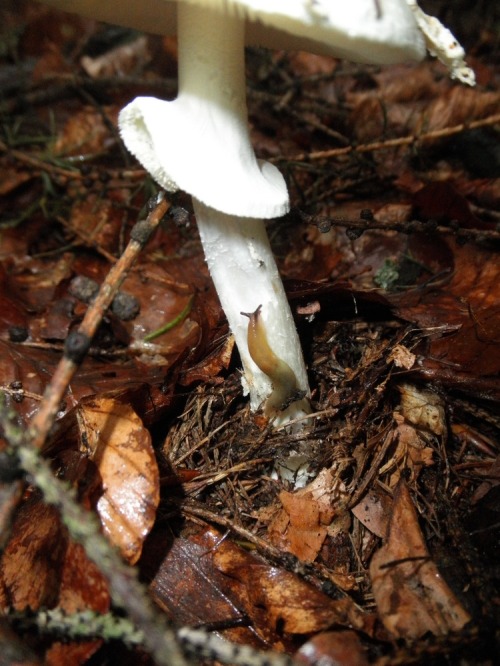Today I was mushroom hunting. One of the best findings was the death cap Amanita phalloides, that is the most poisonous fungus of the Northern Hemisphere. It is deadly poisonous for humans, but some animals, such as gastropods can eat them without any problems.
When you are mushroom hunting, yellow slug Malacolimax tenellus is one of the most common species you can find even in spruce monoculture plantings. It is strictly woodland species living in Europe. Coniferous forests are not suitable environment for many gastropods, especially for snails. Snails can not create their shells in acidic coniferous forest habitats easily. Therefore usualy only few slug speciess thrive there.
Although this time the slug has fallen down when trying to go up over the annulus, there are many markings how the fungus is damaged by this slug: on the top of the cap (not visible on these photos), on lamellae, on the stipe, the whole volva is eaten.
Gastropods are alo resistant to hallucinogenic alcaloids hyoscyamine and atropine that are available for example in mandrake plant Mandragora officinarum.
References:
(in Czech) (15 May 2011) “Peyotl, mandragora a další: Ze světa halucinogenních rostlin” Český rozhlas [Czech Radio] http://www.rozhlas.cz/planetarium/priroda/_zprava/895839 – reference about the mandrake. It would be good to have more scientific reference for the resistence to mandrake. If you know some, let me to know.
Barker G. M. (ed.) (2001) The biology of terrestrial molluscs. page 263. http://books.google.com/books?id=WlvX-9Wt0toC
(in Slovak) Lisický M. J. (1991). Mollusca Slovenska [The Slovak molluscs]. VEDA vydavateľstvo Slovenskej akadémie vied, Bratislava, 344 pp.





